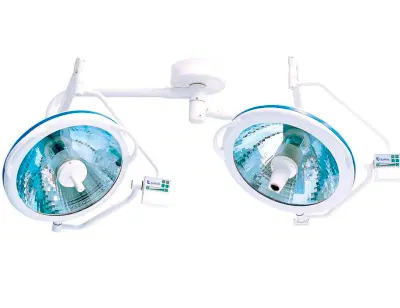The operating room is the place where surgical interventions are carried out in hospitals or clinics, this place requires adequate conditioning for it. Therefore, special artificial lighting must be available to perform surgical procedures, also known as surgical lighting or operating lights.
Types of surgical lights
- Incandescent: They can be halogen, which add gas with halogen and create a regeneration cycle that prevents blackening of the glass, caused by the constant luminous flux; Due to the fact that this type of lamp increases the temperature, low-voltage halogen lamps are used in the operating room, with a duration of 1,000 hours and a luminous efficacy of 22 lm / W. As they can also be non-allergenic, they use an inert gas and are used in the operating room with an efficiency of 10 lm / W and a duration of 1,000 h.
- Gas discharges: in this lamp it subjects a gas with electric discharges, causing an excitation that radiates. It emits a very white light.
- LED lights: they work with electro luminosity, which is a process where a semiconductor is directly polarized, thus emitting light. The energy band of the semiconductor determines the color of the light.
- Fiber optic for surgical lighting – A fiber optic medium is constructed that allows light to be transmitted long distances with very little distortion. In addition, the fiber optic is conditioned to emit a controlled light to illuminate and allow surgeons to see into the cavities.
Ceiling lights are generally LED or incandescent lights, the light fixture can be ceiling or wall mounted, and they have handles that allow the surgeon to adjust the lighting at their convenience.
A method of illumination that is also used in the operating room is the illuminated headlights and magnifying glasses that provide brightness and comfort, as well as that they can be worn so that the light follows the surgeon’s attention. The headlights help facilitate the mobility of the surgeon and have a light without shadow. In addition to headlights, surgical lamps are used in operating rooms; they provide a uniform, homogeneous light without shadow over the operating area.
Good lighting in the operating room allows operating room staff to achieve a higher level of efficiency in procedures and reduces the risk of complications.
At Kalstein we are MANUFACTURERS and we offer equipment of the highest quality and at the best PRICE on the market. Visit us on our website, in the Products section. HERE


